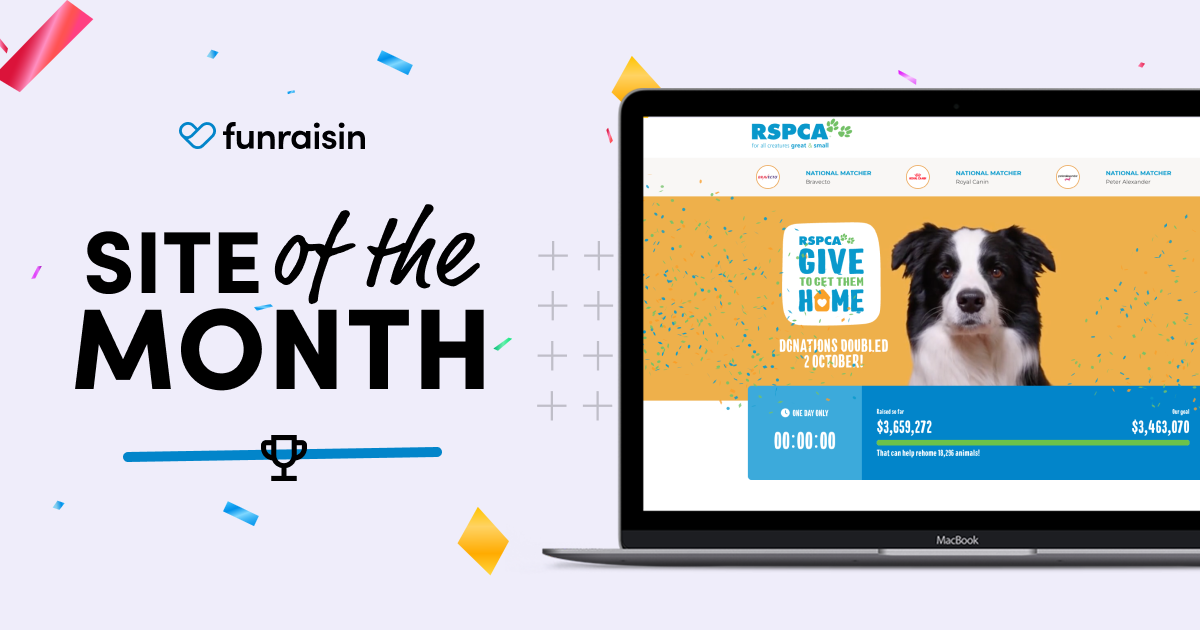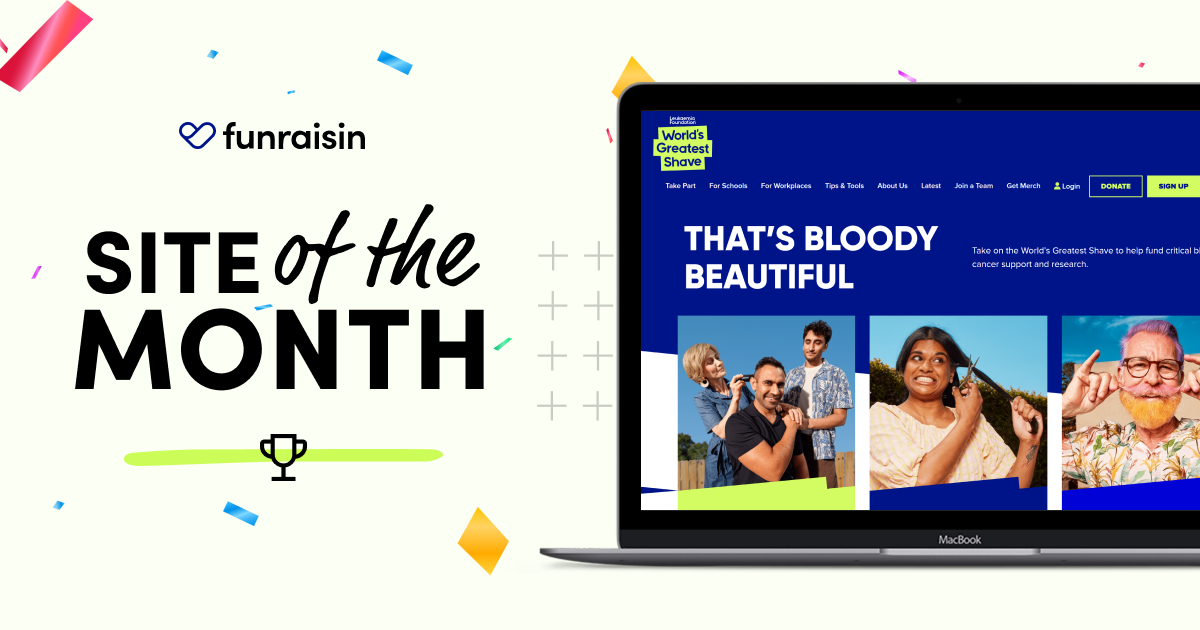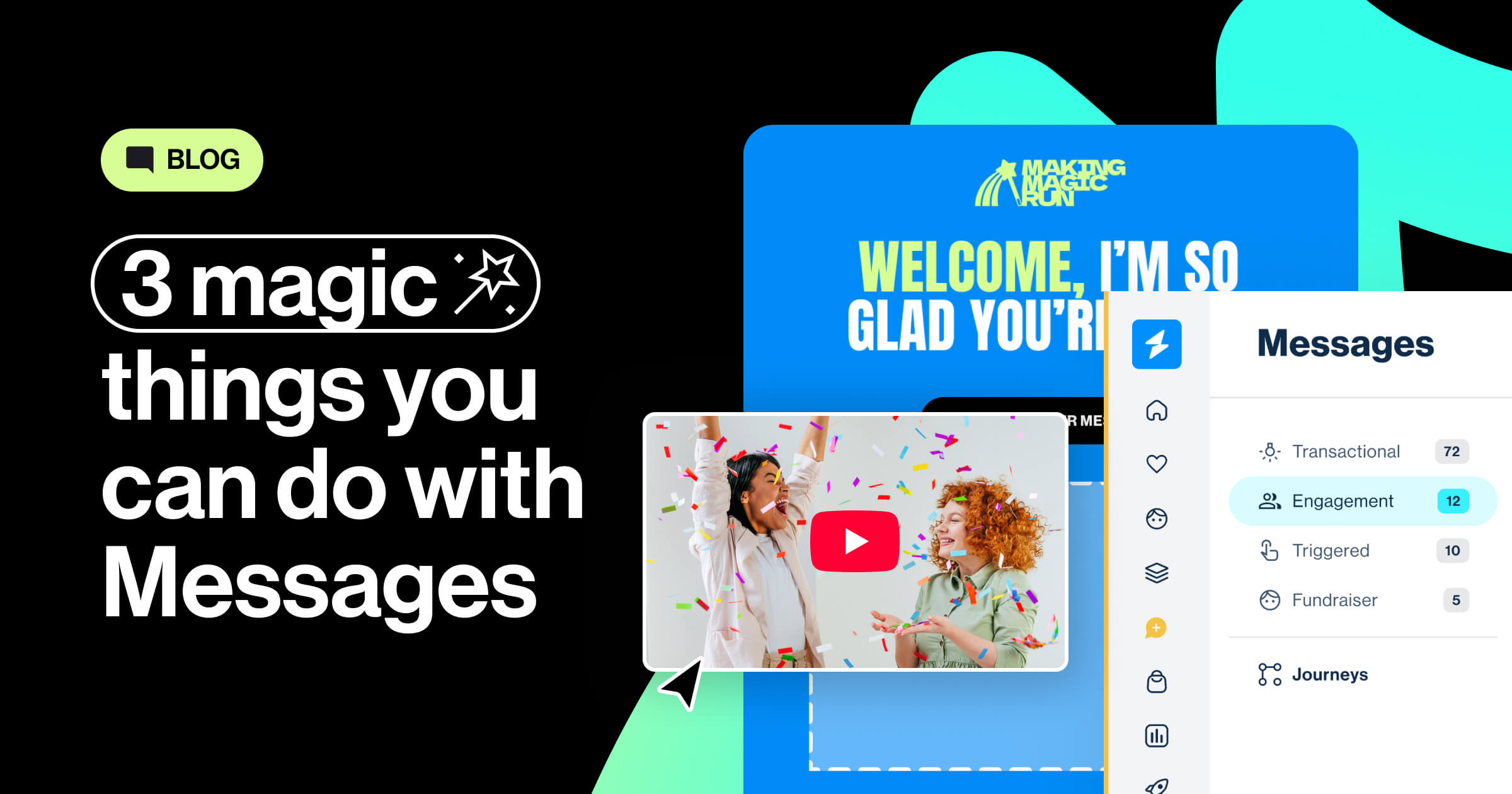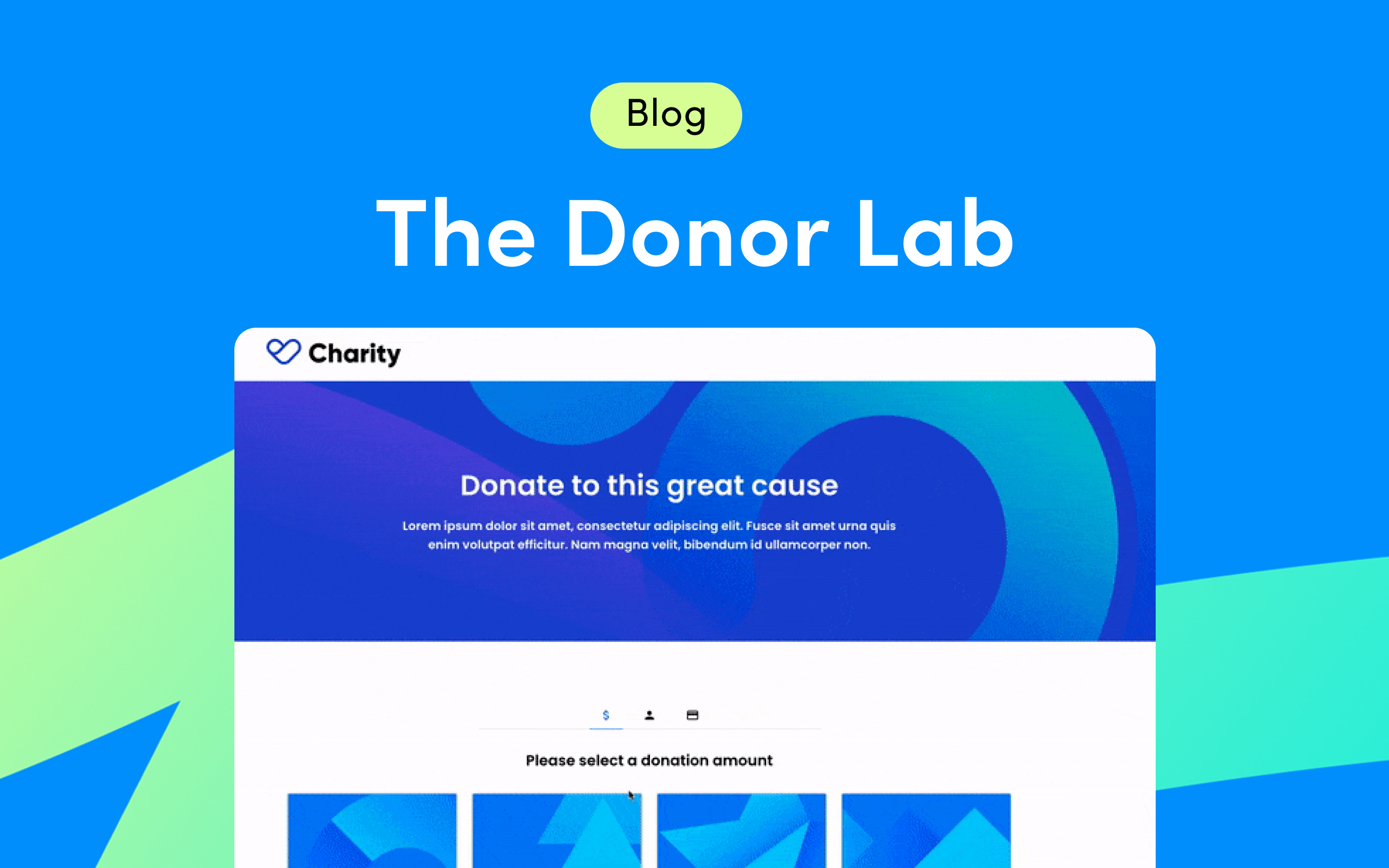Charities have unparalleled opportunities to connect with supporters through social media. But how can you ensure your fundraising efforts are truly maximising these platforms? In a recent Funraisin webinar, Keith Williams, Adrian O'Flynn, and Victoria Read shared practical strategies for leveraging social media to drive fundraising success. Their insights highlighted how Facebook continues to play a pivotal role but stressed the importance of expanding efforts beyond a single platform.
To dive deeper into these strategies, you can watch the full webinar.
Meet the presenters:

Keith Williams
Chief Operating Officer and Chief Marketing Officer at Funraisin, has a long history of helping charities use technology to achieve better results in fundraising.

Adrian O'Flynn
Founder of GYSS, transformed charity fundraising by creating the first-ever Facebook challenge, helping charities raise over £1 billion globally through innovative social media strategies.

Victoria Read
Customer Success Manager at Funraisin, uses her 9 years of charity sector experience to guide partners in unlocking their full fundraising potential through the platform.
Is Facebook enough?
Keith opened the webinar by emphasising the sheer scale of Facebook’s user base. With over 3 billion users globally, Facebook remains the world’s largest social media platform. Since Facebook introduced its fundraising tools, it has helped raise $8 billion globally, making it an important device for charity fundraising. Despite this success, Keith challenged the audience with a thought provoking question: "Could we have raised even more with the world’s largest social media community?"
While Facebook is still a critical and valuable channel, Keith highlighted that changes in user behaviour and platform algorithms have limited its reach and effectiveness. To keep growing, charities must look beyond Facebook and tap into other platforms, such as Instagram, TikTok, and Twitter, to engage new audiences.
Here are our key takeaways for optimising and future-proofing your social media fundraising strategy
Focus on your audience first
Adrian underscored the importance of understanding your audience before choosing platforms. It’s not just about being present on social media—it’s about being on the right channels where your supporters are most engaged. For instance, squat challenges in the UK attracted a 35–44-year-old demographic, and when these challenges were shifted from Facebook to web-based platforms, the average donation per participant more than doubled. This shift happened because certain audiences, especially younger ones, are increasingly moving away from Facebook as their primary social media platform. By offering fundraising through websites, which allowed for greater control and flexibility, these audiences were able to share their campaigns on platforms where they are more active, such as Instagram and WhatsApp, leading to higher engagement and donations.
Key Takeaway
Segment your audience based on behaviour and demographics, and target your fundraising campaigns to supporters where they spend their time.
Adopt a multi-channel approach
Adrian shared data showing that while Facebook remains important, user time on the platform has dropped by 25% since 2018, particularly among younger audiences. Diversifying your social media strategy by integrating platforms like Instagram and TikTok can help you tap into a broader audience and drive more donations. In fact, in one campaign, 40% of the media spend on non-Facebook platforms drove 60–65% of total income.
Key Takeaway
Spread your campaigns across multiple platforms to reach a wider audience and protect against over-reliance on a single platform. Diversification can significantly improve your fundraising results.
Prioritise mobile optimisation
Victoria highlighted that 80% of donations for charities come via mobile, so it’s critical that all fundraising pages are optimised for mobile devices. A mobile-first design improves user experience, reduces drop-offs, and increases conversion rates for donations.
Key Takeaway
Ensure that your website and fundraising pages are fully mobile-optimised to provide a seamless experience for users across all devices.
Track campaign performance in real-time
Adrian highlighted the importance of real-time tracking. By monitoring acquisition performance on different social platforms, charities can shift budget toward the best-performing channels, improving overall results. One client’s mid-campaign adjustments based on real-time data resulted in a £50,000–75,000 increase in overall income.
Key Takeaway
Use tracking tools to monitor the performance of your campaigns in real-time, allowing you to reallocate budget for maximum impact.
Leverage SMS for Higher Engagement
Victoria highlighted the power of SMS in boosting supporter engagement. With the overwhelming volume of emails people receive daily, SMS stands out, offering a more direct way to communicate with fundraisers. Charities using SMS as part of their supporter journey have seen response rates as high as 72%. This makes it an ideal channel for important updates, reminders, and calls to action, particularly when immediate engagement is needed.
Key Takeaway
Integrate SMS into your fundraising campaigns to cut through the noise and increase response rates, providing a more personal and direct touchpoint with your supporters.
Attendee Q&A: Insights from Our Experts
We received many insightful questions during the webinar. Here are some key questions we didn't have time to address live, along with expert responses:
Social Media Platforms and Traffic
Is Facebook still the biggest driver of traffic to web challenge landing pages? What share of that traffic is Facebook vs. other channels?
Facebook remains the largest channel, typically accounting for about 60% of media spend. However, this can vary depending on your target audience. For younger audiences or specific causes like mental health charities, Facebook's share might be lower. It's still a powerful platform for ad clicks and traffic generation.
Are you seeing better results by driving traffic to the website vs. lead gen ads on social media?
Yes, we are seeing better results with website traffic. However, we continue to explore and optimize both approaches.
Would you say from this data that TikTok can be successful for fundraiser recruitment?
TikTok is showing promising results, especially with the right ads and audience targeting. It's important to measure performance throughout the challenge and engage effectively with the audience. One key challenge is avoiding younger teenagers, as age exclusions aren't always effective on the platform.
Metrics and Budget Allocation
Can you clarify what you mean by "profit per sign-up"?
"Profit per sign-up" can refer to either leads from ads or registrations, depending on the campaign type. For lead-driven campaigns, it's profit per lead. For direct registration campaigns, it's profit per registration. This metric helps you understand the cost and value of each acquisition.
Why do you recommend allocating only 7.5% of the budget to new initiatives? Why not more?
We suggest 7.5% because it's generally palatable for most organizations. Larger tech companies might allocate 12-15% to innovation. While you could spend more, 7.5% allows for meaningful learning without risking overall campaign performance. It's a sustainable approach that can yield insights for future campaigns.
Engagement Strategies
Do we need to offer t-shirts for our events to get higher engagement?
Offering t-shirts can increase engagement and sign-ups, but it's crucial to manage this carefully. While it may boost initial interest, it can also lead to a drop in page activation if not handled properly. Consider offering t-shirts to the right audience at the right time, or use them as rewards for reaching fundraising milestones.
How do you encourage more active fundraisers, especially if they struggle to activate their fundraising page?
Key strategies include:
- Make it easy for fundraisers to ask for money
- Provide a compelling reason to fundraise
- Ensure fundraising pages are branded to your charity
- Encourage personalization of fundraising pages
- Offer pre-written content for sharing
- Highlight the impact of donations on your cause
- Use rewards or incentives for reaching fundraising targets
How many CTA buttons would you recommend on a landing page?
Fewer is generally better. Consider switching CTAs during different campaign phases to focus on what's essential at each stage. For example, during key acquisition periods, focus solely on the "Register Now" button to minimize distractions.
Technology and Platform Questions
Do you integrate with Facebook Fundraising, or do I need to use GivePanel?
Funraisin already has Facebook Fundraising tools integrated into the platform, offering various options and flows to create Facebook fundraisers. This eliminates the need for additional providers.
For teams used to Facebook and Instagram ads, how easy is it to get to grips with X (Twitter) and TikTok for paid ads?
TikTok's ad platform is quite similar to Facebook's, though setting up the TikTok Pixel and creating suitable video content can be challenging. X (Twitter) is a different advertising platform altogether, offering cheap reach but often lower-quality traffic, requiring a distinct approach.
Community Building and Communication
Community Building and Communication
While WhatsApp groups have been explored, they present challenges with privacy and moderation. The key is building a sense of community, regardless of the platform. Facebook remains popular due to its ease of moderation, but any social network that allows participants to connect with each other and your cause can work.
What audience segments are valuable for SMS based on your data?
Segmentation, particularly around whether a participant is actively fundraising, has shown to boost activation rates and average amounts raised. SMS can also be effective for urgent, all-participant communications.
By implementing these insights and strategies, charities can enhance their social media fundraising efforts, engage more effectively with supporters, and drive better results for their causes in 2025 and beyond.
Watch the full webinar
The digital fundraising landscape is constantly evolving, and this session provided key strategies to stay ahead. From broadening your reach across multiple social platforms to optimising for mobile and tracking performance in real time, these insights can help your charity drive meaningful results in its next campaign.
Watch the full webinar to get the complete insights and actionable strategies shared by our experts.
Funraisin is dedicated to helping charities like yours leverage the power of social media to grow their impact. Explore how we can support your next campaign by reaching out to our team.









